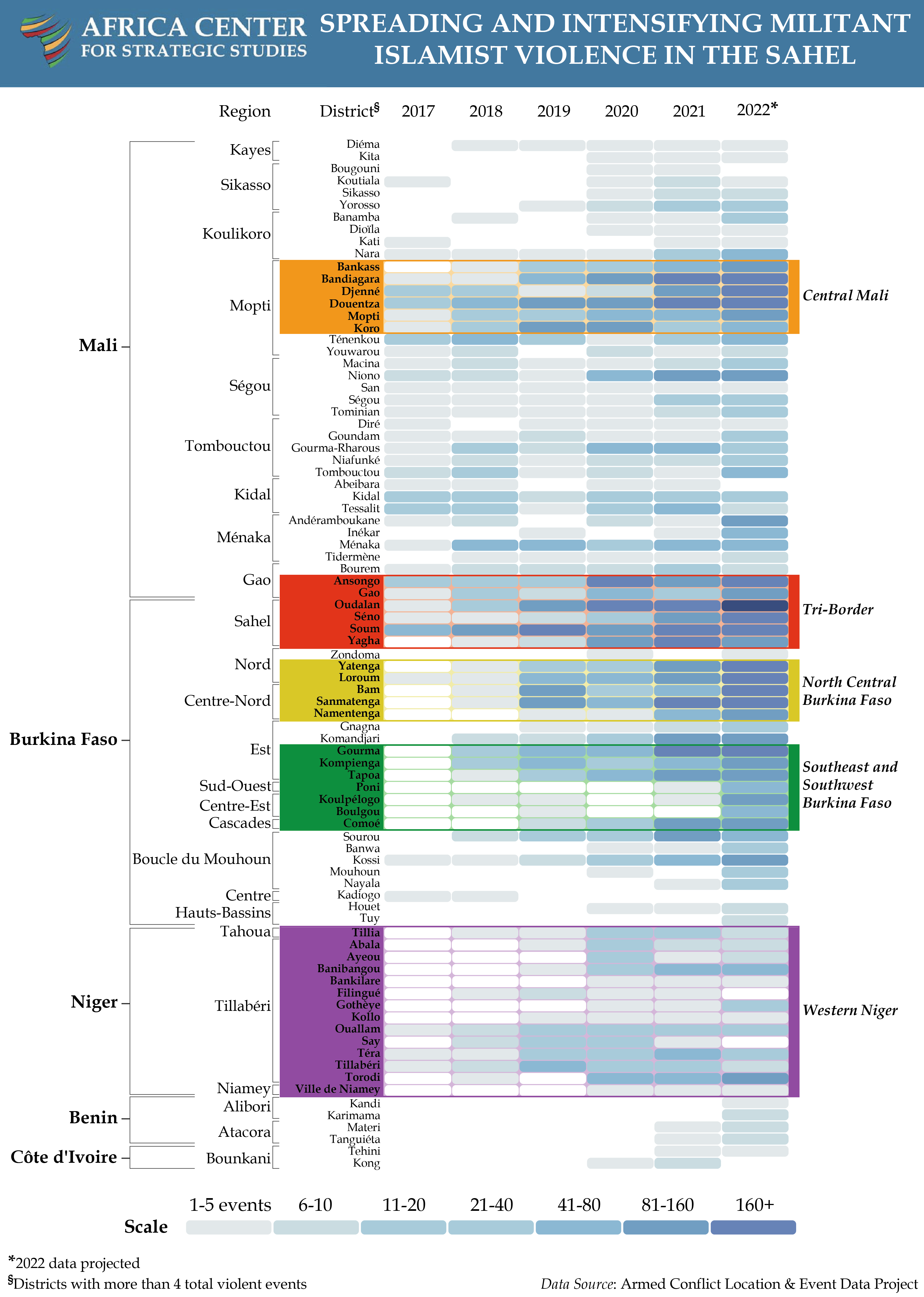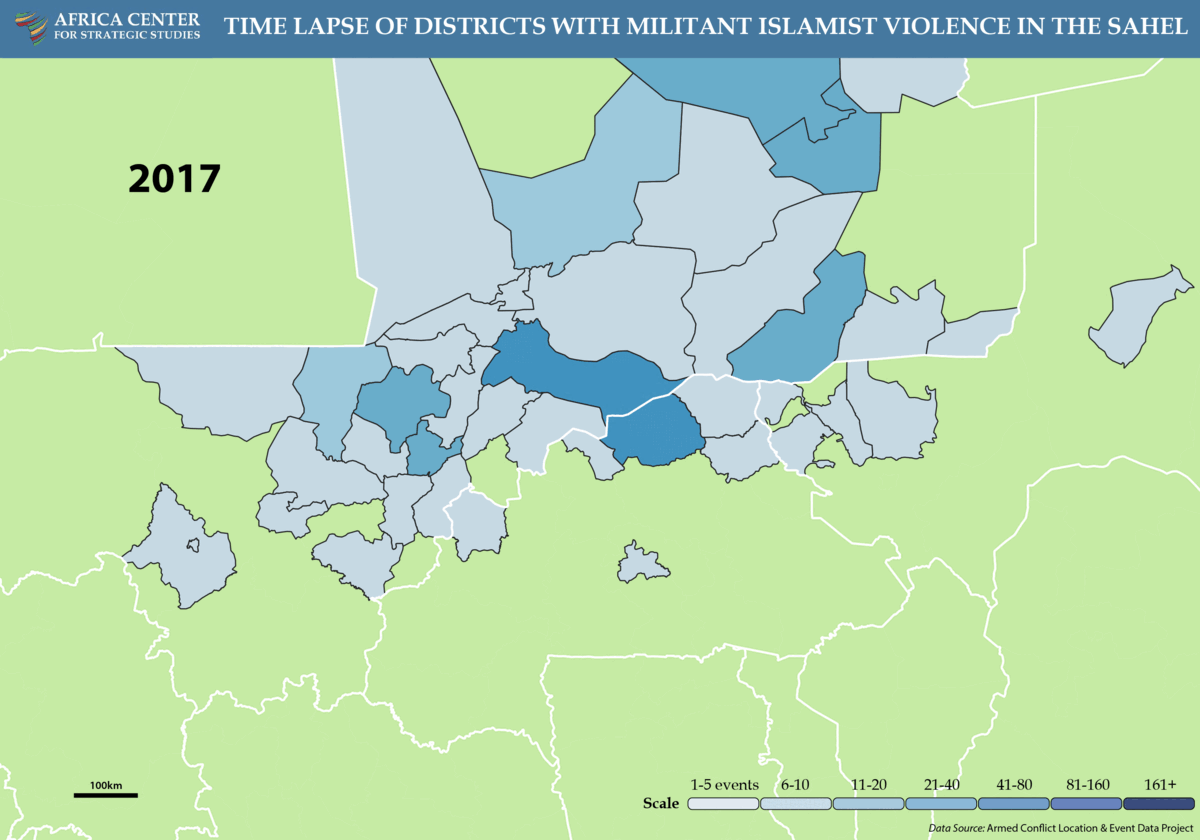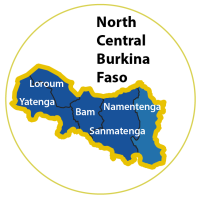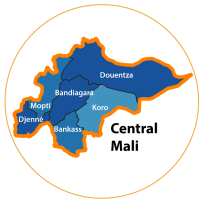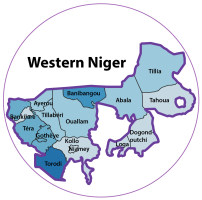The western Sahel has seen a quadrupling in the number of militant Islamist group events since 2019. The 2,800 violent events projected for 2022 represent a doubling in the past year. This violence has expanded in intensity and geographic reach:
- Of the 135 administrative districts in Mali, Burkina Faso, and western Niger, 84 districts, or nearly two-thirds, have experienced violent extremist attacks in 2022. In 2017, this figure was less than one-third (40 districts).
- More than 80 percent of all violent events took place in 30 districts of northern and central Mali in 2017. In 2022, more than two-thirds of the violent events linked to militant Islamist groups in the Sahel took place outside of Mali, mostly in Burkina Faso.
- Seven administrative districts in the Sahel are each projected to suffer more than 100 violent events in 2022. This 100-event threshold had only been crossed 5 times before this year.
Click here for a PDF version of these maps
Often overlooked in these grim trendlines are the differentiated security contexts that comprise this theatre. Five distinct zones emerge, each with varied conflict dynamics: the Tri-Border, North Central Burkina Faso, Central Mali, Southeast and Southwest Burkina Faso, and Western Niger. Collectively, these five zones encompass over 70 percent of militant Islamist violence in the Sahel. Unpacking the features shaping each of these respective zones provides insights into the customized approaches needed to reverse these trends.
Click to navigate to a zone:
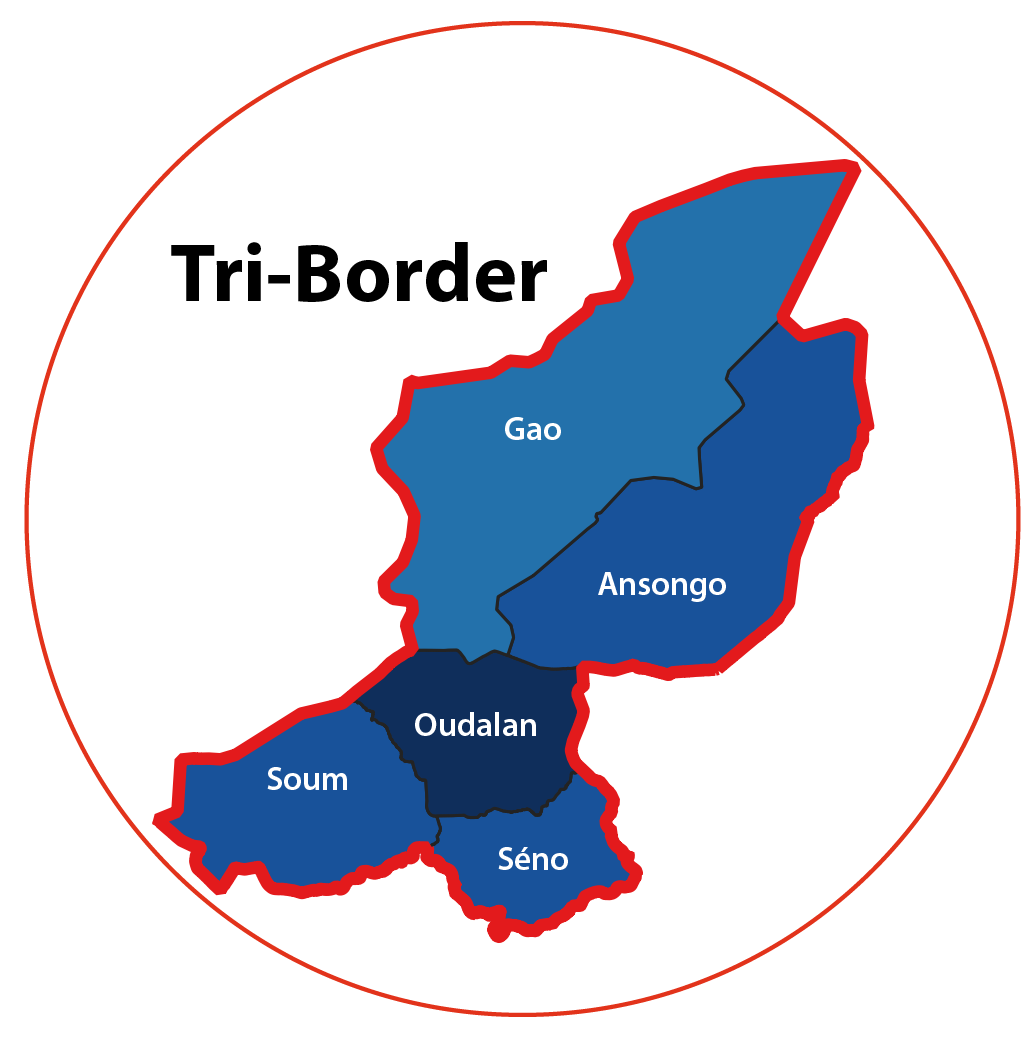 Tri-Border
Tri-Border
This zone covers parts of northern Mali and a region of Burkina Faso and Niger known as Liptako-Gourma. Historically dominated by pastoralist populations, notably the Fulani but also the Tuareg and Gourma peoples, this zone has become the epicenter of violence in the Sahel. Several militant groups, including remnants of the Burkinabe group, Ansaroul Islam, fight under the banner of the Jama’at Nusrat al Islam wal Muslimin (JNIM) coalition. Others are aligned with the Islamic State in the Greater Sahara (ISGS).
- The five districts of Ansongo, Gao, Oudalan, Soum, and Séno account for nearly a quarter of all violent episodes linked to militant Islamist groups in the Sahel. Four of these five districts are projected to witness more than 100 violent events in 2022.
- Burkina Faso’s Oudalan district, which borders Mali and Niger, is projected to be the site of more than 175 violent events. For the second year in a row, Oudalan will suffer the highest concentration of violence in the Sahel.
- More than one-third of the civilians killed during 2022 by militant Islamist groups in the Sahel have lost their lives in one of these five districts. More than 340 civilians are projected to be killed by militant Islamist groups in both Ansongo and Séno districts in 2022.
- There are sharp divisions in the militant Islamist groups linked to the violence in this zone. The vast majority of violent extremist activities in Ansongo (92 percent), Oudalan (88 percent), and Séno (95 percent) are attributed to the Islamic State in the Greater Sahara (ISGS). An offshoot of previously established militant groups in the region, ISGS collects a coercive and heavy zakat (tax) in the tri-border zone, as well as engages in cattle rustling for revenue. Meanwhile events in Soum, the birthplace of Ansaroul Islam, are overwhelmingly attributed to the Jama’at Nusrat al Islam wal Muslimin (JNIM) coalition (98 percent). Events in Gao are roughly split between the two networks.
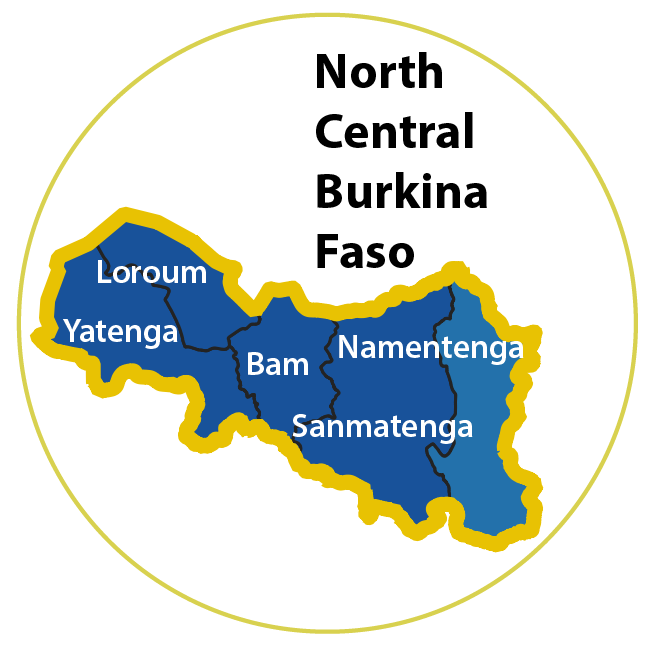 North Central Burkina Faso
North Central Burkina Faso
This zone has experienced one of the most rapid escalations of violence in the Sahel. Militants from the Macina Liberation Front (FLM), part of the JNIM coalition, along with remnants of Ansaroul Islam, have pushed farther south into this more populated area of Burkina Faso (with nearly 3 million inhabitants). The violence has displaced nearly 2 million Burkinabe, many seeking refuge at a displaced persons camp in Kaya, the regional capital and fifth largest urban center in Burkina Faso. This is also an area with significant gold deposits including at least three industrial mines and dozens of registered artisanal mines. Militant Islamist groups seek to control these sites as a major source of revenue for their activities.
- In 2017, only one violent event linked to militant Islamist groups took place in the five districts of this zone—Bam, Loroum, Namentenga, Sanmentenga, and Yatenga. More than 450 violent incidents are projected to take place in this zone in 2022, representing 16 percent of all events in the Sahel.
- This zone has become a primary site of FLM/JNIM expansion into Burkina Faso. ISGS-linked events account for less than 10 percent of events in this area and have occurred almost entirely in Namentenga.
- Violence against civilians (two of every three violent events targeted civilians in 2019) has led to massive population displacements from this zone, enabling FLM and other JNIM-linked groups to effectively control this territory.
 Central Mali
Central Mali
Central Mali has been the stronghold of FLM since 2015. Led by extremist preacher Amadou Koufa, FLM’s violence has dramatically shifted insecurity in Mali from the more remote northern regions to the central districts of Bandiagara, Bankass, Djenné, Douentza, Koro, and Mopti—collectively comprising a population of some 1.5 million people.
Koufa has imposed a harsh version of Sharia to resolve land and resource disputes and has imposed strict behavior rules (especially on women) over significant parts of Central Mali. He has also strategically exploited intercommunal differences, playing up pastoralist grievances as a means to drive recruitment. From this base, FLM has recently led a surge into western and southern Mali becoming increasingly capable of threatening the capital Bamako. This comes after FLM successfully supported JNIM elements pushing into northern Burkina Faso and to a lesser degree farther south into southwestern Burkina Faso.
- Overall, violent events in this zone represent 14 percent of all such episodes in the Sahel and 40 percent of all the incidents in Mali. Since 2019, levels of violence in these districts have been among the highest concentrations in Mali. The number of events increased by roughly one-third in 2020, then by 50 percent in 2021, and is projected to increase again by 33 percent in 2022.
- FLM routinely targets civilians in Central Mali. By the end of the year, more than 500 civilians are projected to be killed in violent events linked to militant Islamist groups in this zone.
- All violent events in the Central Mali zone in 2022 are linked to FLM and Amadou Koufa. A handful of violent events linked to ISGS took place in previous years, predominantly in Douentza, before FLM more firmly consolidated its control over the fringes of Central Mali.
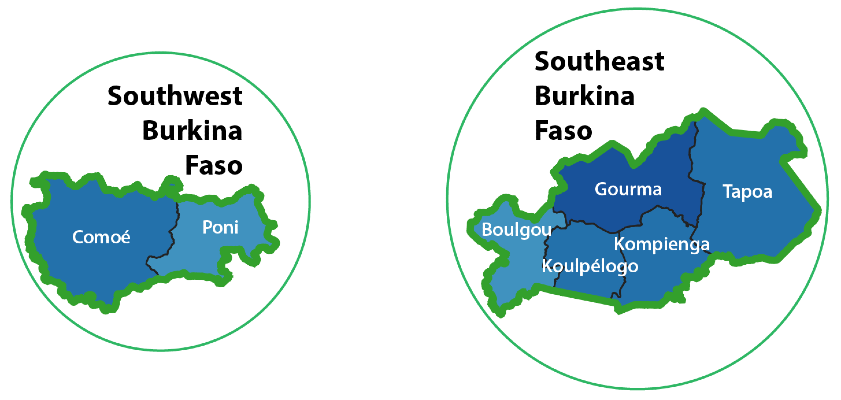 Southeast and Southwest Burkina Faso
Southeast and Southwest Burkina Faso
Nearly all of the incidents in Southeast and Southwest Burkina Faso are attributed to militant groups linked to JNIM. This is consistent with the long history of JNIM-affiliated militants collaborating with criminal, smuggling, and trafficking networks across West Africa.
Southeast Burkina Faso. Starting in 2019, a surge of violent activity attributed to JNIM destabilized eastern Burkina Faso along the border with Niger. Since 2021, it has become increasingly concentrated in the district of Gourma at the center of Burkina Faso’s Southeast. Militant Islamist groups use the parklands in this zone that extend into the territories of Niger, Benin, and Togo for staging attacks into these littoral states. This area is also key to gold smuggling networks connected to Togo as well as other criminal and poaching rings that rely on commercial routes between the countries to move illicit goods.
- Gourma is projected to experience the second highest number of violent events (155) linked to militant Islamist groups in the Sahel. Boulgou and Koulpélogo districts have also faced skyrocketing levels of militant Islamist group expansion. More than 100 events are projected to occur in these two districts in 2022 after only three events were recorded in 2021. Boulgou and Koulpélogo border Ghana and Togo, respectively.
- Militant groups linked to JNIM targeted civilians in nearly half of their attacks in Southeast Burkina Faso during 2022, resulting in an estimated 188 fatalities.
Southwest Burkina Faso. The borderlands between Burkina Faso, Mali, and Côte d’Ivoire exhibit well-developed illicit smuggling and small arms trafficking networks that accompany goods being transported through Côte d’Ivoire to commercial hubs in Mali and Burkina Faso. This area is also developing into a new locus of artisanal gold mining. The 60-percent increase in militant attacks in this zone may be an indication of JNIM-linked groups attempting to capture some of these revenues.
- The district of Poni is projected to experience 34 violent events in 2022, after facing just 4 the previous year.
Littoral West Africa. FLM and other JNIM-linked militants are threatening communities in the northern regions of littoral West Africa. Violent events linked to these groups have occurred in ten districts located in northern Côte d’Ivoire, Benin, and Togo. Though activities in these northern areas remain a small percentage of the overall violence, the expanding presence of militant Islamist groups in these areas is cause for concern.
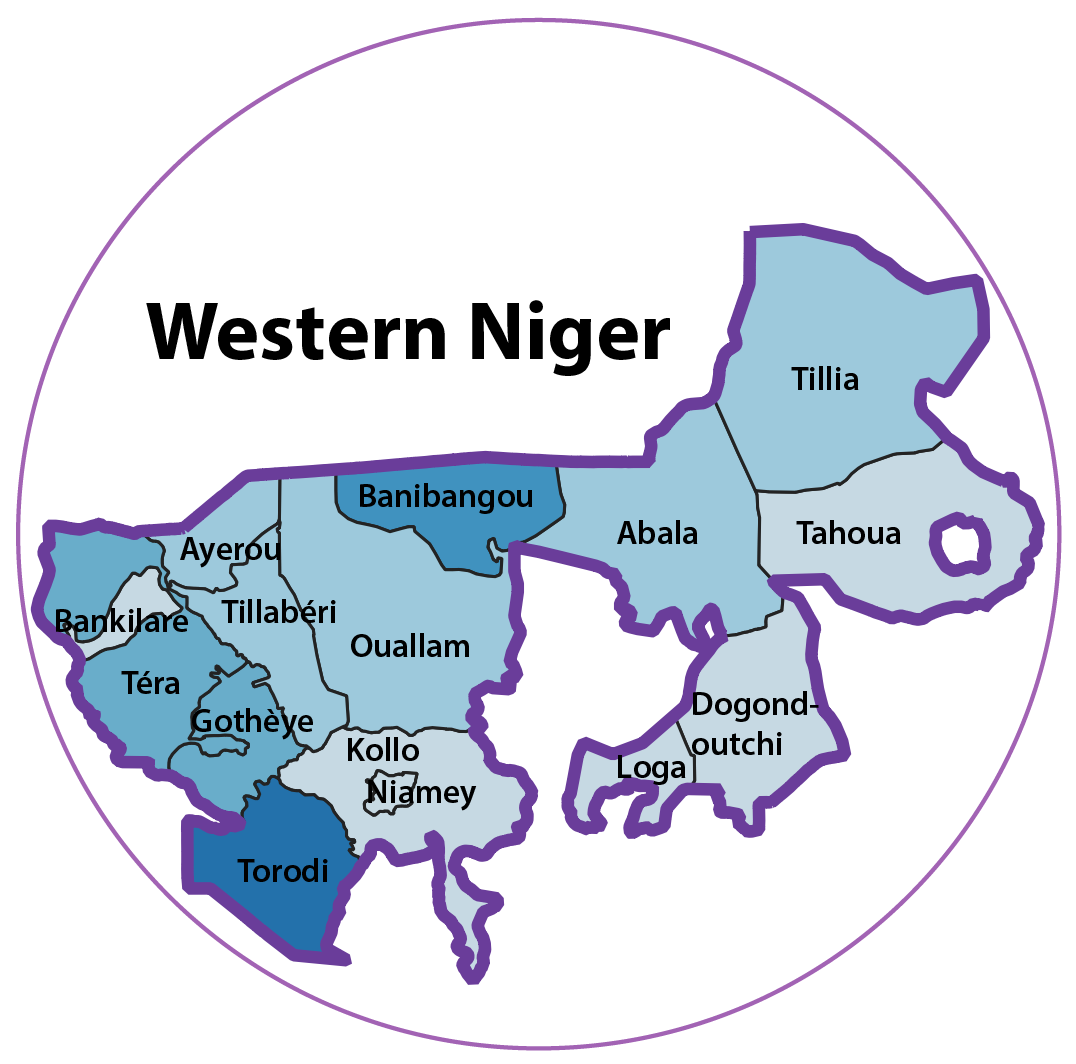 Western Niger
Western Niger
While militant violence in Niger represents less than 10 percent of the total faced across the region, Niger is threatened by the surge in violent activity across its borders.
ISGS has been the primary militant group attempting to exploit Niger’s borders with Mali and Burkina Faso to expand its influence over remote communities. Moreover, violence against civilians, as a proportion of all violence, is much higher in Niger. Militant Islamist groups target civilians in more than half of their attacks in this zone as communities here have attempted to resist ISGS’s extortion through collection of an abusive zakat tax. The districts of Tillia, Ouallam, and Banibangou have been particularly devastated.
Gothèye and Torodi are the only districts where JNIM operates in Western Niger. Torodi borders Southeast Burkina Faso where JNIM has made an aggressive push, using parklands and reserves as a safe haven.
The 174 violent events projected in Western Niger in 2022 represent a nearly 10-percent increase from the previous year.
Takeaways
Drilling into the dynamics shaping insecurity in the respective zonal hotspots provides valuable insights into the broader trajectory of militant Islamist violence in the Sahel that can help better align resources and mitigation strategies. Several overarching takeaways emerge:
- Three zones—Central Mali, Tri-Border, and North Central Burkina Faso—comprise over half (55 percent) of all violent events in the region. This underscores the importance of Central Mali as a base and staging area for attacks into neighboring zones.
- Militant Islamist groups in the Sahel continue to exploit border areas where they can take advantage of a diminished security presence. Districts abutting national borders represent 65 percent of all violent incidents recorded in 2022.
- Exposed borders remain the key vulnerability for Niger and the littoral states given the intensifying levels of attacks across their borders.
- The targeting of civilians appears to be a deliberate tactic to intimidate local communities into cooperation or to force their displacement, providing militant Islamist groups both greater leverage and territorial control.
- At least part of the violence against civilians is aimed at controlling revenues from gold and trafficking networks, reflecting the increasingly criminal nature of militant group activity in several of these zones.
Additional Resources
- Africa Center for Strategic Studies, “Mali’s Militant Islamist Insurgency at Bamako’s Doorstep,” Spotlight, August 29, 2022.
- Michael Shurkin, “Strengthening Sahelian Counterinsurgency Strategy,” Africa Security Brief No. 41, Africa Center for Strategic Studies, August 2022.
- Africa Center for Strategic Studies, “Sahel and Somalia Drive Rise in Africa’s Militant Islamist Group Violence,” Infographic, August 9, 2022.
- Leif Brottem, “The Growing Threat of Violent Extremism in Coastal West Africa,” Spotlight, March 15, 2022.
- Daniel Eizenga and Wendy Williams, “The Puzzle of JNIM and Militant Islamist Groups in the Sahel,” Africa Security Brief No. 38, Africa Center for Strategic Studies, December 2020.
- Pauline Le Roux, “Responding to the Rise in Violent Extremism in the Sahel,” Africa Security Brief No. 36, Africa Center for Strategic Studies, December 2019.



